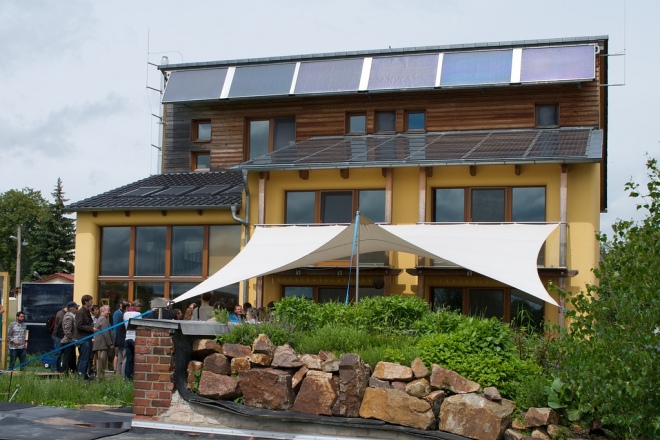Last week I taught a class at the University of Colorado for a friend. The class is entitled Another City is Possible: Re-Imagining Detroit. She wanted me to talk about the link between cars and climate change. As usual, I didn’t finish putting the talk together until a couple of hours before the class, but it seemed like it worked out pretty well anyway. In fact, I actually got feedback forms from the class just today, and they were almost uniformly awesome to read. As if I might have actually influenced someone’s thinking on how cars and cities interact, and how cities could really be built for people. It makes me want to figure out a way to teach on a regular basis. Here’s an outline of what I said, and some further reading for anyone interested.
What is a car?
For the purposes of this discussion, when I say “car” I mean a machine capable of moving at least 4 people at a speed of greater than 80 km/hr (50 mi/hr). This means cars are big (they take up a lot of space) and cars want to go fast (though in reality they go at about biking speed on average, door-to-door, in urban areas). Cars as we know them today are also heavy, usually in excess of 500 kg (1000 lbs) and numerous, because they’re overwhelmingly privately owned. These four characteristics in combination makes widespread everyday use of automobiles utterly incompatible with cities that are good for people. Big, fast, heavy, numerous machines are intrinsically space and energy intensive, and intrinsically dangerous to small, slow, fragile human beings.
The Takeaways:
- Tailpipe emissions are just the tip of the iceberg — the vast majority of the sustainability problems that cars create have nothing to do with what fuel they use, or how efficiently they use it. Amory Lovins’ carbon-fiber hypercars could run on clean, green unicorn farts, and they’d still be a sustainability disaster.
- The real problems that come from cars are the land use patterns they demand, and the fact that streets and cities built for cars are intrinsically hostile to human beings. In combination, sprawling, low-density land use and unlivable, dangerous streets functionally preclude the use of transit, walking, and biking as mainstream transportation options. In a city built for cars, you have no choice but to drive.
- The good news is that another city is not only possible, it already exists. Very modest density (about 50 people per hectare or 10 dwelling units per acre) is enough to drastically reduce car use, and make low energy transportation commonplace. In combination with good traditional urban design, these cities are extremely livable, healthier, cheaper to maintain, much more sustainable, and much safer than our cities.
- The bad news is Peak Oil is not going to save us. There are a whole lot of unconventional hydrocarbons out there in the oil shale of the Dakotas, the tar sands of Alberta, the ultra-heavy crude of Venezuela’s Orinoco basin, and the ultra-deep water reservoirs off the coast of Brazil, etc. We’d be crazy to burn them all, but hey, maybe we’re crazy. And even if we did run out of oil, it’s entirely possible to electrify our cars for everyday urban use, even with today’s mediocre battery technology. If we want a different kind of city, we’re going to have to choose to build it.
Continue reading Another City is Possible: Cars and Climate


